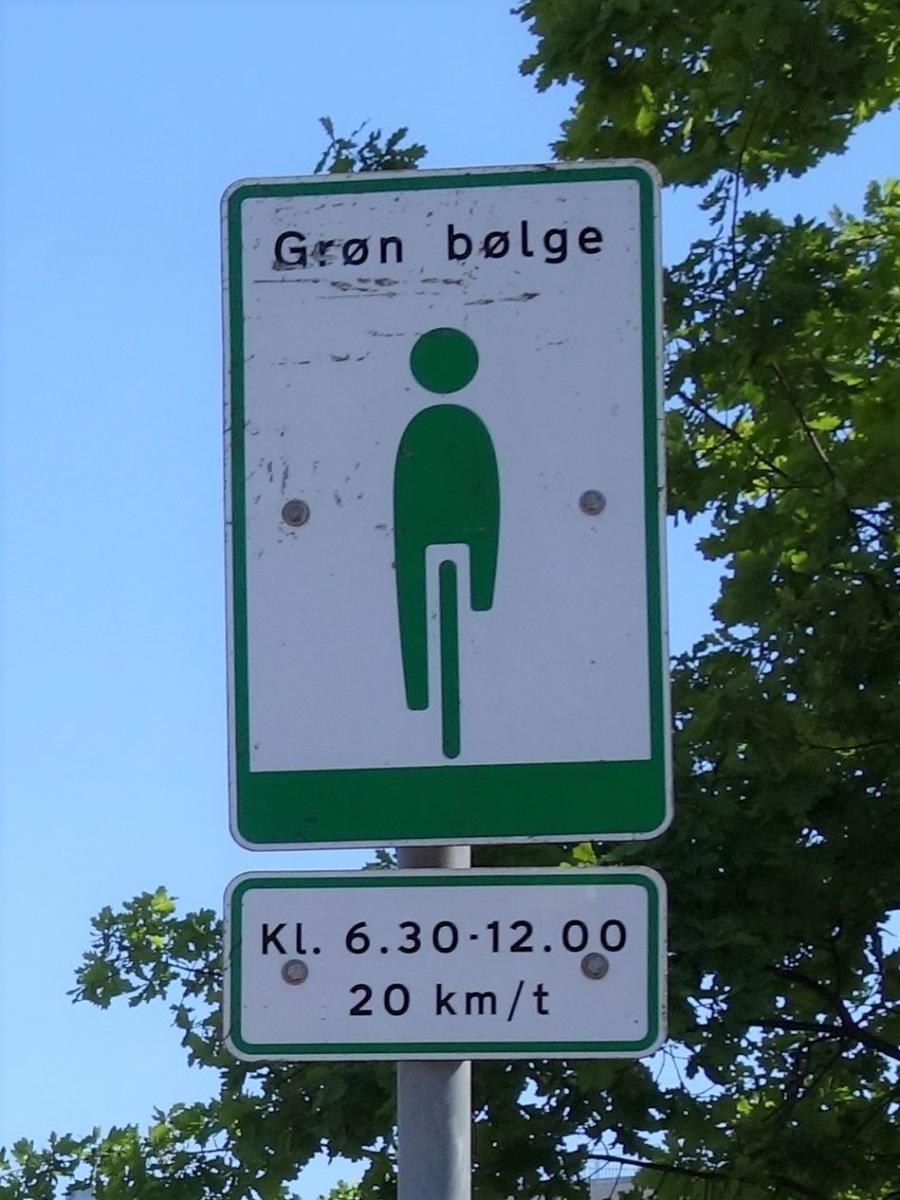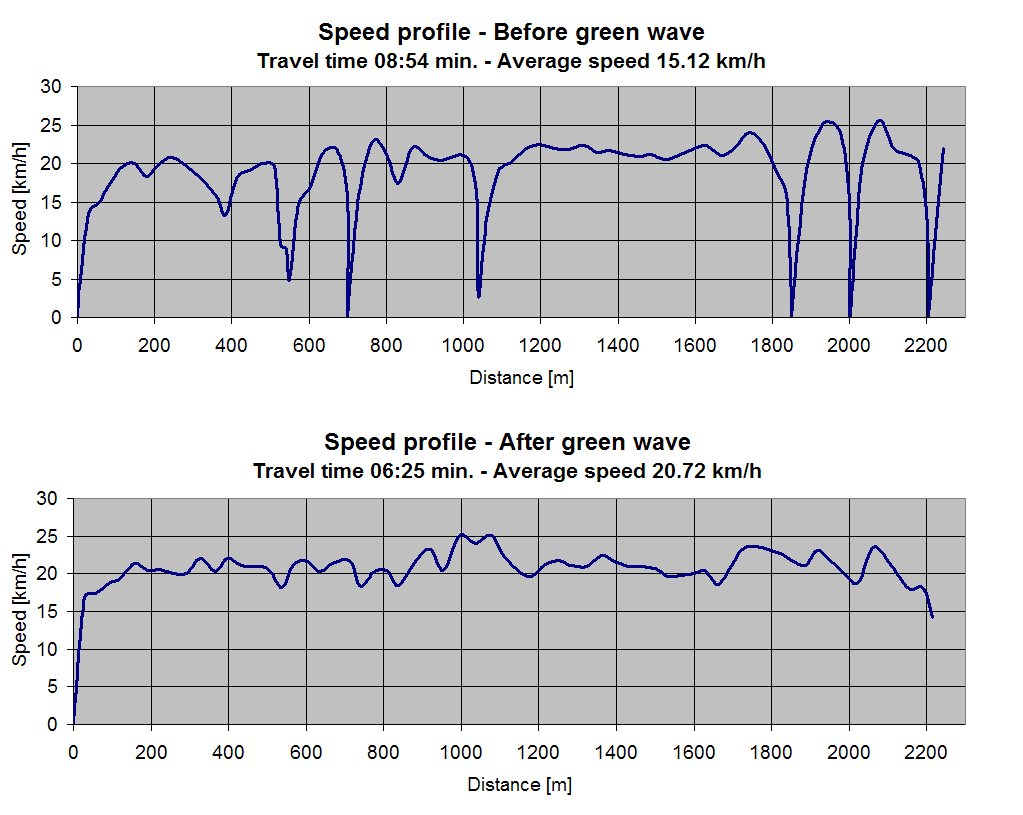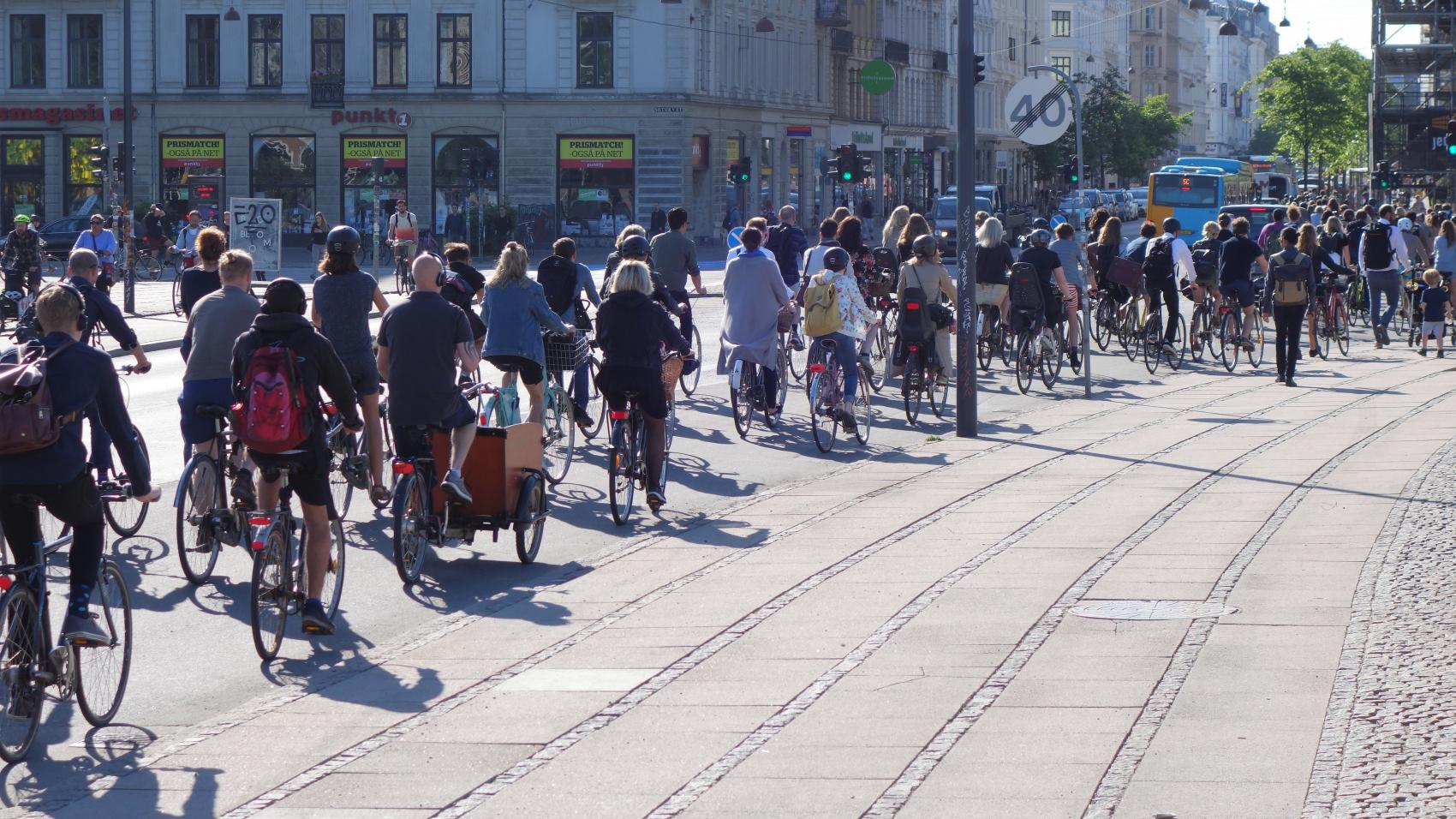Up to 48 thousand cyclists per day cross Queen Louise Bridge in Copenhagen. We revisit Nørrebrogade on the cycle highway C95 to check how traffic lights were adjusted to facilitate the flow of bicycle traffic.
On cycle highways like RijnWaalpad or Batavierenpad Zuid the number of interruptions is reduced by bridges, tunnels and priority for cyclists on crossings. This is not always an option in densely populated city centres, but significant improvement can also be achieved by adjusting traffic light programs.
On 2,2 km long section of Nørrebrogade between Nordre Fasanvej and Dronning Louises Bro, 12 subsequent traffic lights are synchronised for travelling at the speed of 20 km/h in the dominating direction of traffic: between 6:30 and 12:00 in the direction of centre, between 12:00 and 18:00 in the direction of suburbs. The green wave for bicycle is coordinated with green wave for buses, taking into account the location of bus stops and average dwell time at them.

Green wave principle and how it can accommodate different modes of transport moving at different speed. Source: Fietsberaad.nl.

20 km/h green wave sign in the direction of city centre.

Comparison of cyclists’ speed profile before and after introduction of the green wave. Source: “Evaluering af grønne bølger for cyklister i Københavns Kommune”, 2013.
Introduction of the green wave for cyclists resulted in increasing average speed from 15.1 to 20.7 km/h. This means a reduction of travel time by 2,5 minutes (nearly 30%) on just 2,2 km.
Reduction or elimination of waiting times on a crossing is also saving space necessary for accumulation of cyclists waiting for green light.

The impressive “bicycle traffic jams” that one can observe on Dronning Louises Bro form partially because the crossing after the bridge is not included in the green wave coordination.
The article is a part of a series showcasing examples of cycle highways infrastructure in North-Western Europe. We will come once again back to Nørrebrogade to see how cycle paths along the streets were widened to accommodate growing traffic.
More about cycle highways in Copenhagen: http://supercykelstier.dk/english/ More about green wave for cyclists: http://www.fietsberaad.nl/?section=Voorbeeldenbank&lang=en&mode=detail&ontwerpvoorbeeldPage=&repository=Green+wave+for+cyclists
